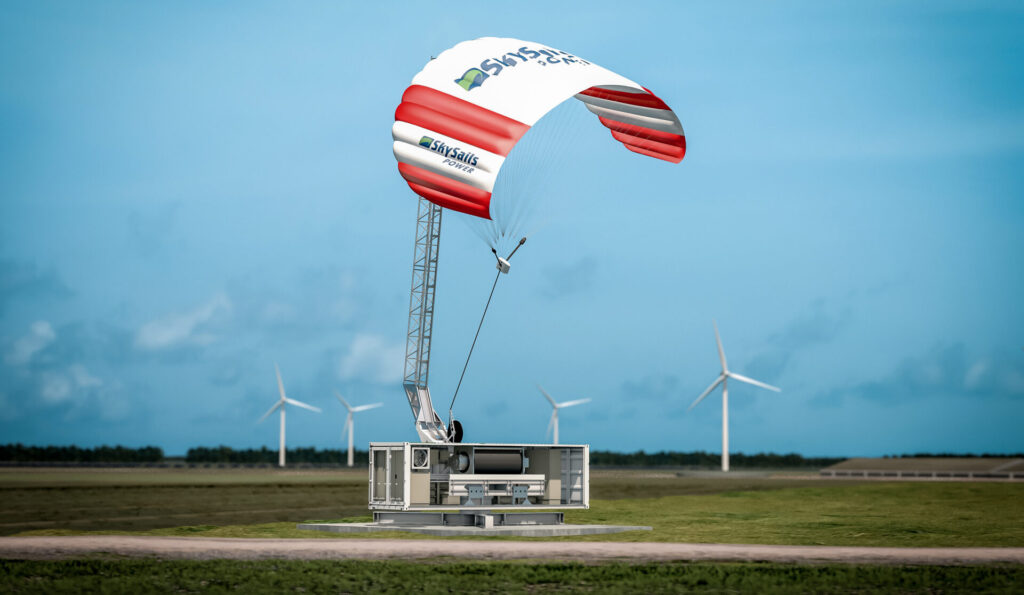How It Works
Powering a Greener Future

Harvesting High-Altitude Wind Energy with Power Kites
Airborne Wind Energy Systems are a trendsetting solution in making the energy transition truly happen. The significant challenges of rapid renewable energy deployment are flexibility, reliability, and a competitive cost. SkySails Power’s Airborne Wind Energy Systems address all these challenges successfully through the use of power kites.
The Kite Power Cycle
Driven by the wind, the automatically controlled power kite rises in figures of eight. As it gains altitude, it unwinds a tether from a winch on the ground. The tractive force drives a generator inside the winch that produces electricity. This is called the “work phase”. Once the tether has reached its maximum extension, the autopilot steers the kite into a neutral position with minimal drag and lift. While consuming only a fraction of the energy generated during the work phase, the generator now acts as a motor and reels-in the tether. The system continuously repeats this process, flying the kite at an altitude of 200 to 400 meters. The concept behind the kite power cycle is called the “yo-yo principle”. Energy generated by the Airborne Wind Energy System can be fed into the grid, stored in batteries, or directly consumed. The power kite can land for maintenance or before forecasted weather extremes. Once it docks to the launch and landing mast, it is lowered to the ground, where it can be unmounted and stowed in a safe place.
Overview of major components

Kite
The ram air kite is made of high-performance textiles with a reinforced ripstop weave. Air intakes and air brakes allow changing the aerodynamic profile during start, operation, and landing. Steering lines connect the kite’s canopy to the control pod below. A line system inside the canopy allows reefing it for storage.
Control Pod
The control pod contains the autopilot system that steers the power kite by manipulating the steering lines and air brakes. It is powered by a ram air turbine. Several installed sensors measure all relevant signals required for a safe and autonomous system operation.
Tether
The tether is the connection between the control pod and the winch inside the ground station. It is made of HMPE and specially developed for applications with a high demand for safety (e.g., cranes and lifts).
Launch & landing mast
A reliable and flexible launch and landing system is required to safely launch and land the power kite. The mast can be lowered to attach or unmount it completely.
Ground station
A standard container houses the ground station for easy transport and installation.
Drive train
The drive train consists of the winch, gearbox, and generator. It converts the pulling force and velocity of the tether into electrical energy.
Tripod with ring mount
A yaw system corrects the ground station alignment with the wind direction.
Watch the SkySails power kite take to the sky and discover how it harnesses the enormous energy of high altitude winds. This is how wind power’s true potential can be used on an industrial scale for the first time ever.